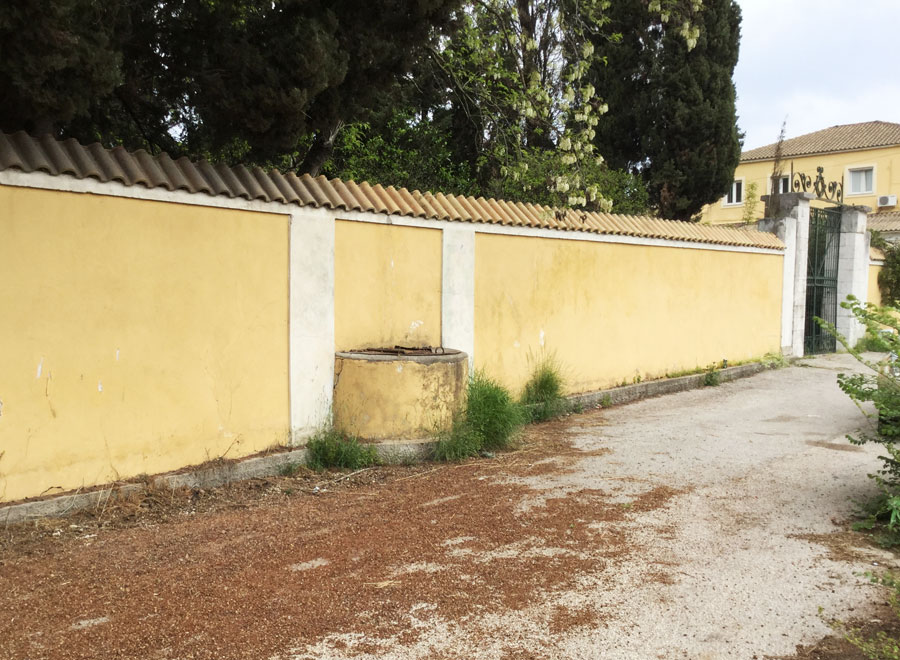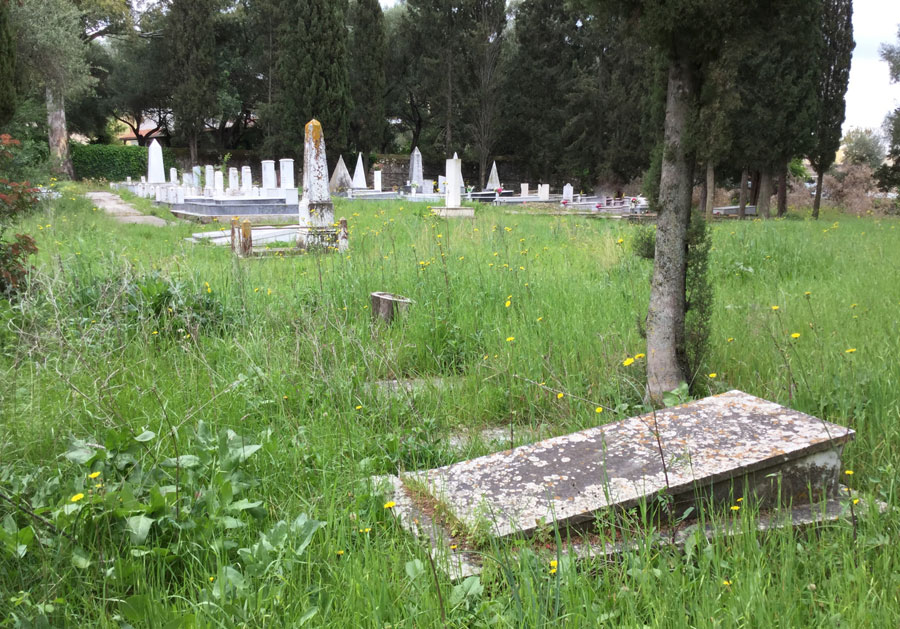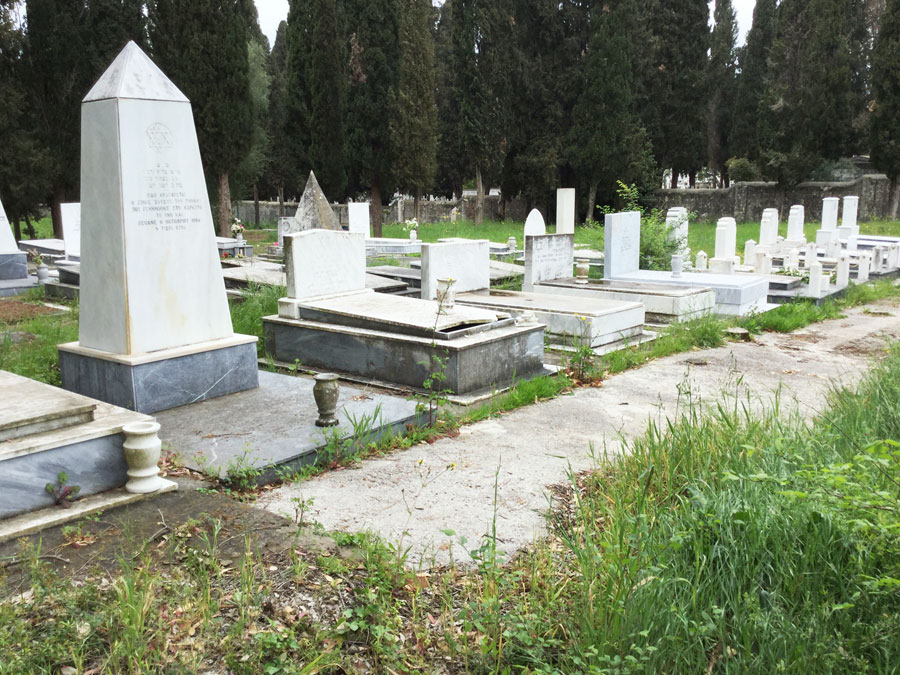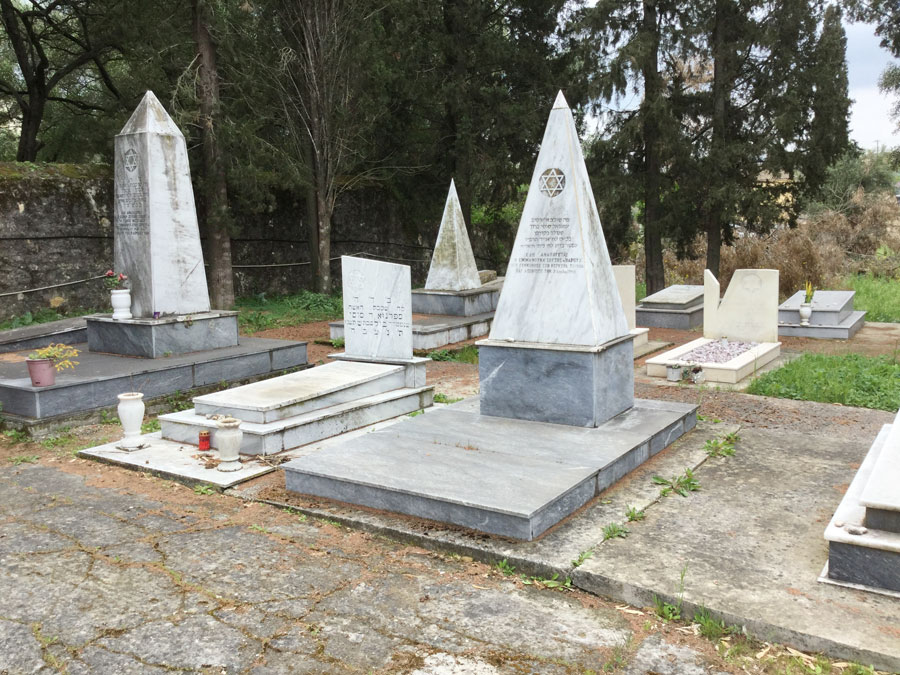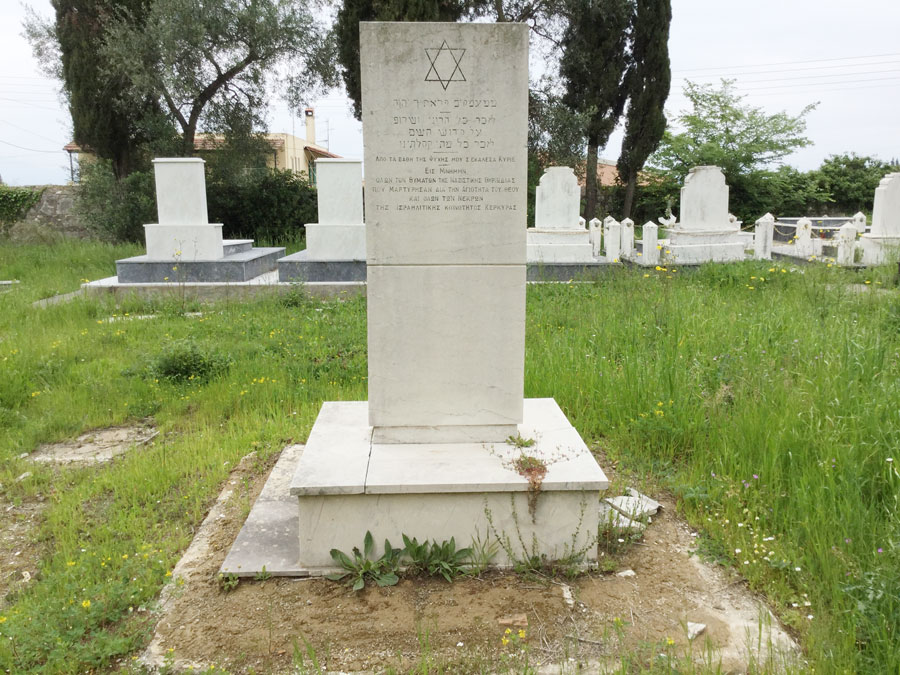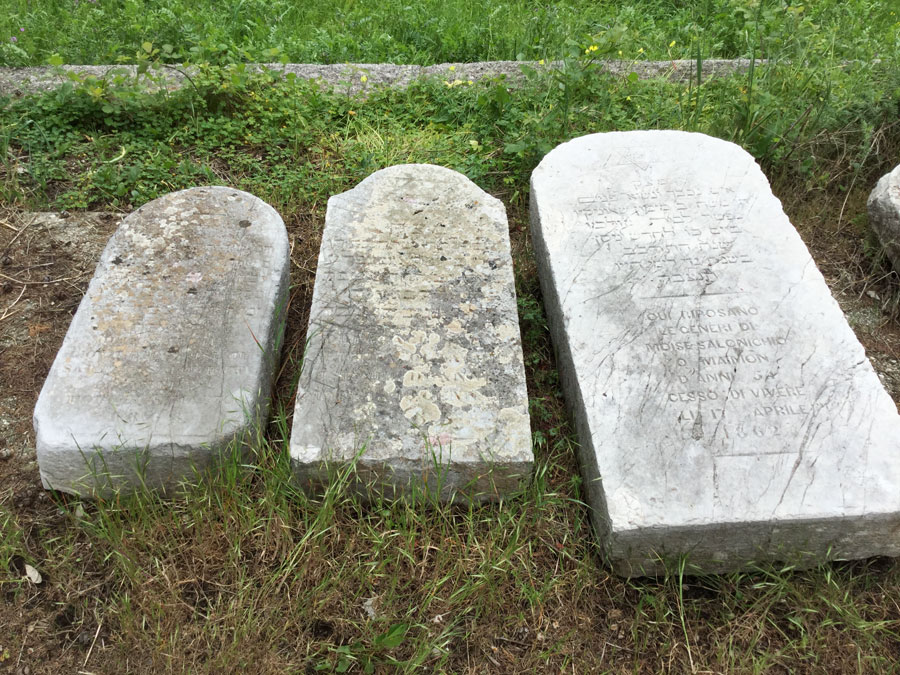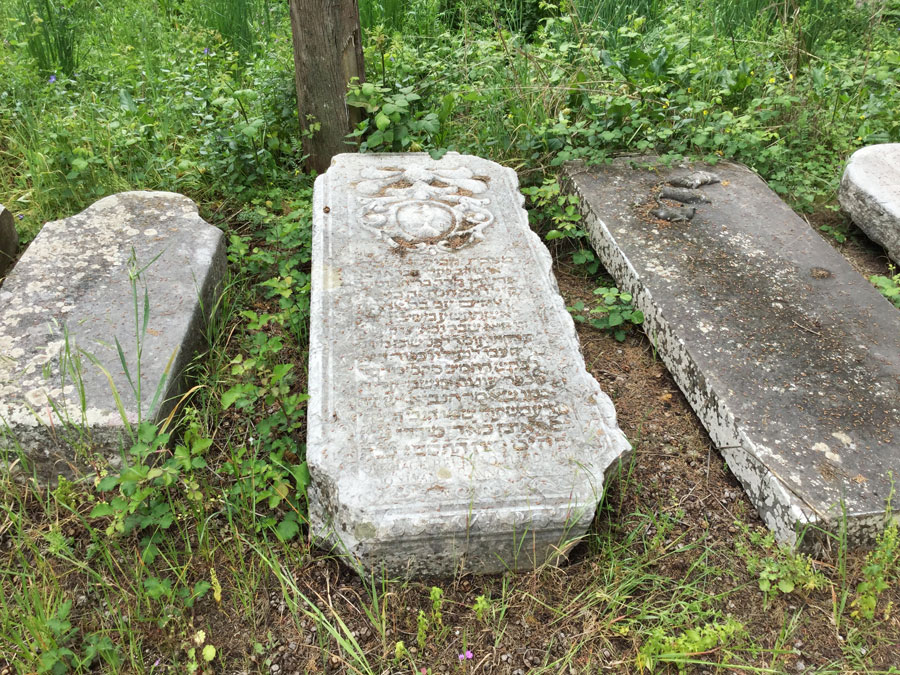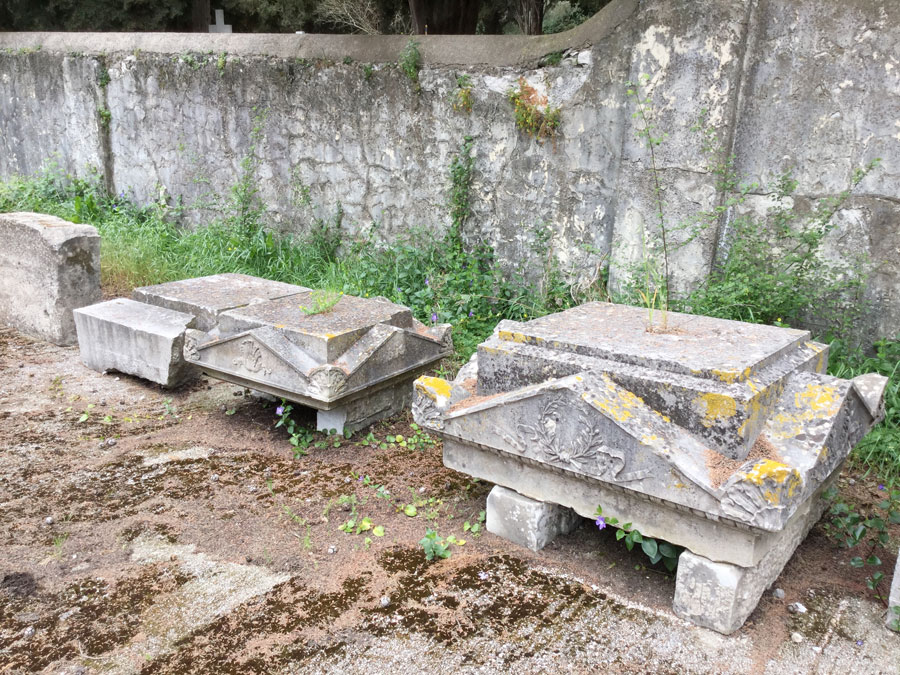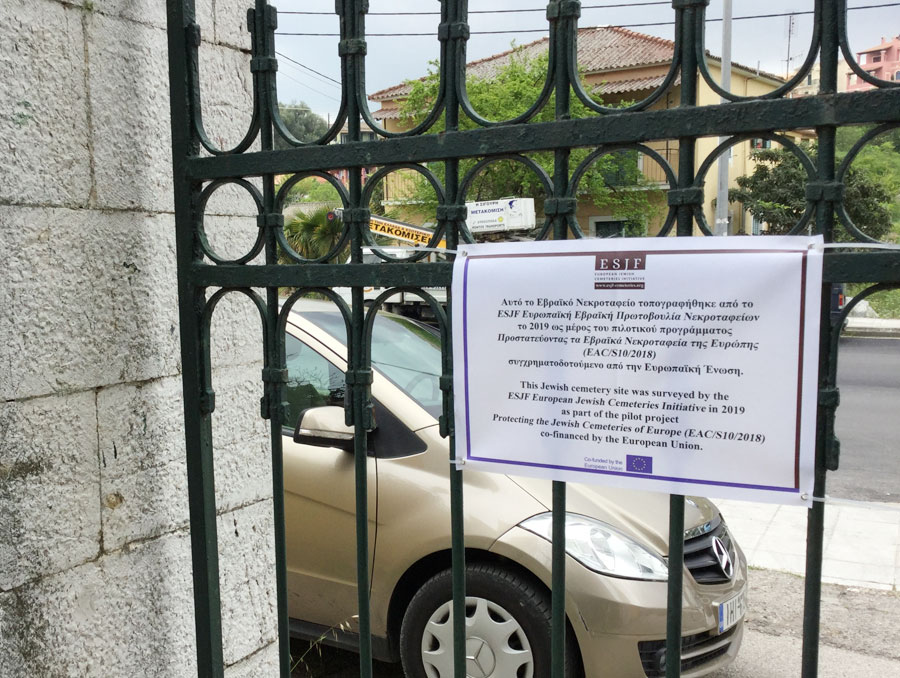The operating cemetery is in good condition and cared for by the Jewish community. It is slightly overgrown.
In the Middle Ages a community of Romaniot Jews from the Balkan peninsula was formed in Corfu. In the late 14th century, Jews from southern Italy settled in Corfu and in the late 15th century, a number of Jews exiled from Spain, Portugal, and Sicily settled there. In 1522, there were around 200 Jewish families in Corfu, mostly Romaniot. In the 16th century, the Italian congregation developed and from 1540-41 included exiles from Naples. Among them was Yitzhak Abravanel, who wrote his commentary on the book of Isaiah there before moving to Venice. There were three synagogues at that time. In 1622, the Jews were ordered to live in a ghetto and received protection from the authorities. By this time the Italian community predominated over the Romaniot community in size and organization. However, the Romaniot community preserved the Greek tradition over the centuries, which became known as the Corfu Rite (Minhag Corfu). In the early 19th century, the Jewish population grew with an influx of Jews from Italy and the Ottoman Empire. The Jewish population in 1802 was 1,229 (of a total population of 45,000). In the 1820s and 1830s, many Romaniot Jews fleeing the violent Greek struggle for independence arrived in Corfu. During this period, Jewish education on the island was modernised and traditional studies were expanded to include science, Greek, and Italian alongside Hebrew. In 1863, the Jewish population peaked at 6,000 (of a total population of 64,974). A Hebrew press operated intermittently between 1853 and 1896. After 1875, a Jewish girls’ school for the poor was opened and a Jewish elementary school was established in 1887. Jewish communities, organisations and philanthropists worldwide sent donations and aid to the riot victims, including the Alliance Israelite and the Hirsch and Rothschild families. In the early 20th century, the community’s school was closed down. In 1906, a Zionist organisation, the second in Greece, was established in Corfu. By 1923, the community numbered only around 3,000 Jews (of a total population of 102,552), and was the 4th largest community in Greece after Salonika, Kavala, and Ioannina. In the 1930s, the Zionist organisation consequently closed down.
Prior to the Holocaust, the Jewish community numbered 1,880 (of a total population of 108,345), two-thirds of whom belonged to the Italian community and one-third to the Greek. The Italian community had three synagogues and the Greek community had one. In 1943, the Germans bombed Corfu, destroying many Jewish homes and the three Italian synagogues. In May 1944, around 1,800 Jews were rounded up. They were conveyed by freight train to Auschwitz; several died on the way. Only a few survived the death camp. A few survivors returned to Corfu after the war and were joined by around 120 from other areas. Thus the community was revived but remained small. The Jewish population was 125 in 1948 and 85 in 1958, rising to 104 in 1959.
The exact period of the cemetery’s establishment is unknown, but it can be assumed that the new cemetery in Corfu emerged between the 19th and 20th centuries.
Palaiokastritsas 9
491 00 Kerkira
Greece


